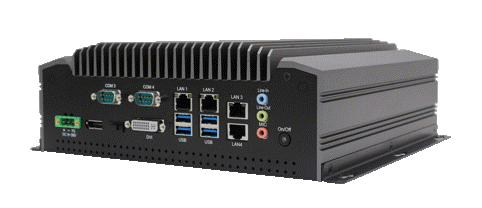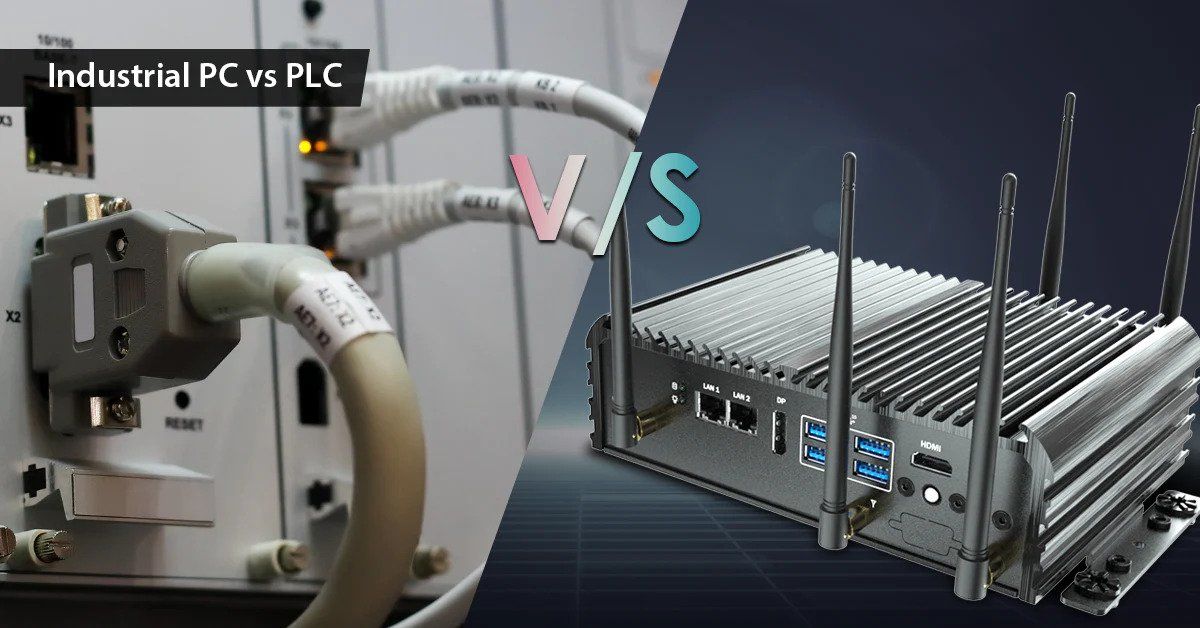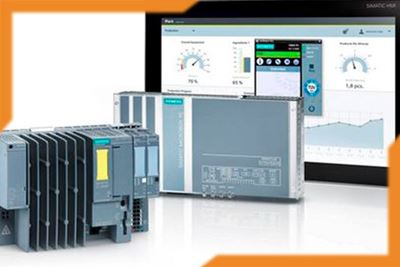What is an industrial PC?
In recent years, the issue of mechanization of industries has become one of the basic infrastructures of industries due to the improvement of management tools and also the increase in efficiency. Based on this, processing in these environments is considered one of the main and primary needs of mechanization and automation.
Industrial computers, which are responsible for processing in industrial environments, are considered the most important and risky components of industrial automation systems. Therefore, the selection and design of engineering and optimization of industrial automation networks, and especially the correct selection of industrial computers, is a subject that cannot be overlooked by the sharp eyes of industrial network designers.We also know PLC and HMI as industrial PC too.
Due to the progress in recent years, the desire to use computers in industries that have the possibility has increased. These computers play an important role in the industrial automation system of industrial units.

Depending on the type of industry, industrial environments have special conditions such as dusty environments, high temperatures, humidity, or even pollution. For this purpose, the first need that is felt in industrial computers is the lack of communication between the internal parts and the external environment. For this reason, the use of cooling and heating equipment such as fans in this type of equipment is avoided. Industrial computers are usually designed without fans and cables and are subjected to rigorous tests to strengthen their resistance in harsh environments. In addition to the mentioned issues, the quality of the parts used in the equipment should be mentioned. Due to the sensitivity of the type of activities, the components used in Industrial Computer usually support the industrial standards required by various industries such as IEC-61850-3, EN50155, and DNV. For example, the EN50155 standard is a specific standard for the operation, design, construction, and testing of electronic equipment used in vehicles and rail applications. Considering this issue, industrial computers that are specially designed for the railway industry are subjected to various environmental tests in order to ensure proper operation in conditions such as different voltages, power cuts, and power supply replacements, with the EN50155 standard. . These pieces of equipment deal with environmental disturbances such as vibration, shock and temperature variation.
What is the use of Industrial PC and where is it used?
Generally, displays are designed and produced for industrial and advertising purposes. Each of these displays has different technical and appearance features. Sometimes they are used for monitoring and control rooms and sometimes for advertising or entertainment purposes. Industrial monitors are used in most industries and businesses that have a high workload and need to stay on continuously.
Different types of industrial computers:
1- Touch panels (Panel PC with Touch)
2- Embedded computers (Embedded PC)
3- Mobile industrial PCs
4- Industry Server Solutions
5- Custom Industrial PCs
What is a PLC?
PLC stands for Programmable Logic Controller, which means programmable logic controller, and is known as an industrial computer that is the main part of industrial automation. It can be said that PLC is a special type of computer designed for reliable operation in specific industrial conditions. Conditions such as very high temperatures, humidity, dryness, and dust. PLCs are designed to automate industrial processes. Works such as the assembly line in a manufacturing plant, processes in ore factories or sewage treatment plants, etc.
PLC structure
PLCs are built instead of traditional control panels whose operation depended on electromagnetic logic relays and are based on timers of industrial control systems. PLCs are able to continuously monitor inputs from sensors and make decisions about outputs. Every PLC system needs at least the following three modules:
• Processor module
• Power supply module
• One or more input/output modules
Getting in touch with types of PLCs
To have more detailed information about PLCs and their types, categories have been designed for them. In general, different types of PLCs fall into four general categories.
Mini PLCs Mini PLC
From the name of this category, it is clear that these types of PLCs fall under the category of small PLCs. Due to their small size, it is obvious that they have some limitations, among which we can point out that they benefit from fewer inputs and outputs. It goes without saying that these PLCs, due to their limitations, are not very suitable for large projects and are more useful for small projects.
Compact PLC
The special feature of this type of PLC is very interesting. The design of this type of PLC has been such that all parts and components, including inputs and outputs, processor, power supply, etc., are all placed in one box. Compared to mini PLCs, compact or integrated PLCs are larger and can receive a wider range of input and output. (that is, 300 inputs and outputs, while this number is 40 for mini PLCs.).
It is good to know that these PLCs are still not the biggest PLCs, and they are not suitable for large projects and can only satisfy medium projects. Among the applications of this type of PLC, we can mention the intelligence and automation projects of factories.
Modular PLC
These types of PLCs also have very special features. In this type of PLC, important parts and components are separated! Of course, it should be noted that it is also possible to place them next to each other. Among the other features and in other words the advantages of this type of PLC, we can mention the ability to receive the number of inputs and outputs above them. This type of PLC can receive up to 2000 inputs and outputs. These types of PLCs need a frame to be closed on their end section before starting to work.
Rack mount PLC
It is good to know that this type of PLC is very similar to the previous type, namely modular ones. The special thing about these PLCs is that the inputs and outputs in this type of PLC are connected to the central module, which is located at the end of the PLC. This type of PLC is able to receive even more inputs and outputs. This number reaches 5000 in this type of PLC. Therefore, it is obvious that this type is the best and most suitable type of PLC for large projects. Among the applications of this PLC, we can mention the projects of large refineries and petrochemicals.
What is the main difference between Industrial PCs and PLCs?
The 4 main differences between these PLCs and PACs are:
• From a programming point of view, a PLC has a fixed memory map. In contrast, a PAC allows tag-naming, which enables the user to specify the type of their data. This allows more flexibility for the system, especially when it comes to expanding the system.
• While PLCs have great speed to run, PACs typically provide the user with more I/O capacity and more memory for larger projects.
• Advanced PLCs have various settings to increase communication and handle data, PACs emphasize the features placed more on the system itself, such as data collection via USB, a web server to view system data and communication data, and An LCD screen for displaying user information and programs and troubleshooting.
• PACs are designed to better communicate with databases. Also, PACs are a good choice for control processing processes because they have other features such as an analog resolution of up to 16 bits for special measurements.
Finally, it can be said that choosing the right controller for the control system depends on many factors such as the work environment, program needs, future expansion plans of the desired unit, etc.

For simple control tasks such as controlling a typical machine, a PLC is undoubtedly a more logical choice than a PAC, and for discrete I/O applications, a PLC is the best choice, unless the choice requires more than the normal system size, such as handling large amounts of data.
If your application includes the monitoring and control of many analog I/O devices, or the entire control system of a large factory or industrial unit, which is actually a large distributed I/O control system, in general, PAC is better than PLC. It is a better choice.







